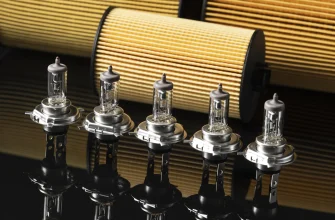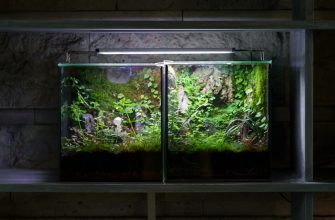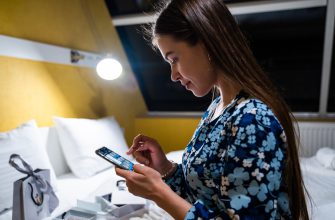The level of illumination, as well as the amount of light, is perceived by humans on a subconscious level – this is how our eyesight works. We automatically notice the difference between a bright sunny day and cloudy weather, between the light from a spotlight and the light under a street lamp at night.
A sufficient level of illumination is when you don’t need to strain your eyes to do a certain job, such as reading or sewing. Comfortable conditions in terms of eyestrain and overall safety are important, as insufficient lighting can cause injury. The lighting on the stairs and in the kitchen work area should be different, because the lighting requirements in these areas are different. But how to measure this indicator in numerical form, what is light measured in and how is it done? Let’s find out.
What is illumination and why should it be measured?
First, we need to define the basic concepts. Any light source (natural or artificial) generates rays with certain parameters.
- Luminousflux (measured in lumens, Lm) is the main physical characteristic of any luminaire. Luminous flux can be defined as the amount of light emitted into space.
- Light brightness is related to the intensity of the luminous flux that reaches our eyes. This indicator largely depends on the properties of the reflective surface. In practice, this is a subjective parameter – a characteristic of light energy that we perceive with our eyes. Brightness determines how strong or weak the light seems to us.
- Illumination (measured in lux, Lx) is the amount of light falling on a unit of illuminated surface. This parameter characterizes the distribution of the luminous flux – 1 lux = 1 lumen/1 square meter. Lighting lux is usually used to control the illumination and regulate the standards for the organization of lighting design of a room.
In practice, the relationship between luminous flux and illumination is more complicated – it depends on the optical properties of the space (presence of a shade, gas pollution), distance to the illuminated surface and the angle of incidence of the light beam.
In general, indoor lighting consists of several components (all three or only 1-2 of them) – natural daylight, main lighting, and localized lighting. To evaluate the lighting characteristics from the point of view of health safety, standards developed by physicians are used, such as permissible light levels, pulsation coefficients, and recommendations for light intensity. Previously, building codes were used, but since 2002, the international lighting standard ISO 8995 has been in effect in Ukraine. Different types of rooms, spaces, and activities are regulated by lighting standards:
- 100 lux/sq. m – for corridors, hallways, recreation areas in the residential sector and for office premises.
- 150 Lux/sq. m – for stairwells and escalators.
- 200 Lux/sq. m – for living rooms, dining rooms, sanitary rooms.
- 300 Lx/sq. m – for sales areas of small shops, administrative areas in offices, lobbies of restaurants and hotels.
- 500 Lux/sq. m – for conference rooms and sales areas of supermarkets, restaurant kitchens.
- 750 lux/sq. m – for design rooms.
These are just a few of those listed in ISO 8995. As you can see, there is a clear correlation between the lighting standard and the level of visual work. The maximum value of lux/sq. m is required in rooms where high concentration of attention is required to perform high-precision work. To ensure that these standards are met, modern light sources are used. LED lamps are in trend now, as they provide high-quality bright light in the most economical way.
At the project development stage, a lighting scheme is created – the type and number of luminaires and control devices are determined according to the standards. Over time, the luminous performance of the installed luminaires can change for various reasons, which affects the lighting level of the room. This affects not only productivity but also the health of people in the room. At enterprises, the level of lighting is controlled by the occupational health and safety departments, and lighting measurement is their direct responsibility.
How and what is used to measure illumination
There is a class of devices called luxmeters. As the name implies, they measure the amount of light in lux. Structurally, a lux meter consists of a sensor and an information processing unit. The device works similarly to a solar panel: when exposed to light, an electric current is generated on the sensor, which is then measured to determine the level of illumination. The more photons that hit the sensor, the stronger the current that occurs – a directly proportional relationship is observed. The magnitude of this electrical signal is converted into the illumination value of the area where the measurement is performed.
Method of measuring illumination
Occupational health and safety is guided by the provisions of the current DSTU B V.2.2-6-97, which regulates the method of measuring illumination in buildings and premises of various types:
- Using a luxmeter, the total illumination of the room is determined, and then the illumination is measured at a specific workplace or area of other activity.
- The obtained values are compared with the established standards.
- In case of insufficient lighting, appropriate measures are taken, such as replacing lamps with brighter ones.
The level of illumination affects not only the comfort of a person’s stay in a room. Excessive strain on the eyes worsens the psychological state and provokes eye diseases, such as asthenopia (visual fatigue), headaches, dryness and redness of the eyes. Light pulsation, the unevenness of light radiation, which is measured by a coefficient, is particularly harmful to human health.
Pulsation of light radiation
The unevenness of the intensity of the light flux over a constant period of time is manifested in pulsation. This effect is almost impossible to detect visually, but it can have a significant impact on your well-being. As a result of the harmful effects of pulsation, discomfort occurs, and health deteriorates – weakness, heart rhythm disturbances, depression, and other disorders in the body may appear.
It is impossible to measure pulsation in absolute terms – a coefficient is used that depends on the difference in maximum and minimum illumination over time, and this value should be divided by twice the average illumination:
Pulsations = (Emax – Emin)/2Eser x 100%.
Building codes and labor protection standards regulate the maximum value of the pulsation coefficient – from 5% in workplaces to 20% in waiting rooms, sanitary rooms and other public spaces.
What are the practical benefits of lighting measurements?
Lighting measurements in industrial, commercial, and office environments have clearly defined goals that meet business objectives. Insufficient lighting (or excessive lighting) combined with fluctuations in the light flux negatively affect the production process and create problems for the business that need to be addressed.
Improper organization of lighting at home can have less obvious, but no less negative consequences. Poor quality or weak lighting is very harmful to human health – and not only to eyesight.
The impact of lighting on various aspects of life
- Comfort. Proper lighting helps us feel comfortable, while insufficient lighting can strain our eyes and cause discomfort.
- Safety. Good lighting prevents household injuries and accidents.
- Productivity. Proper lighting makes it easier to work, study, or do other activities such as computer work or crafts because we can see better and concentrate.
- Vision. Poor lighting negatively affects your eyesight, especially when reading or working on the computer.
- Mood. Bright lighting can boost our mood and energy, while soft light in warm colors creates a cozy atmosphere.
- Economy. Measuring the illumination helps to choose the right number and type of light sources, which saves energy and money.
- Design. Lighting can also be used for decorative purposes – to emphasize the architectural features of the room, to form a style, to create a certain mood.
After measuring the illumination, you need to draw the right conclusions that will help make the room more comfortable, safe, and functional.
There are different ways to correct the situation with improper lighting. If LED chandeliers are installed, modern models are usually equipped with remote controls or other lighting control devices. If you use traditional lamps with a standard E27/E14 base, the problem is solved by simply replacing the bulbs with brighter ones. By using different timers and remote controls, you can optimize the operation of the luminaires, which will increase the level of comfort and help save energy.








